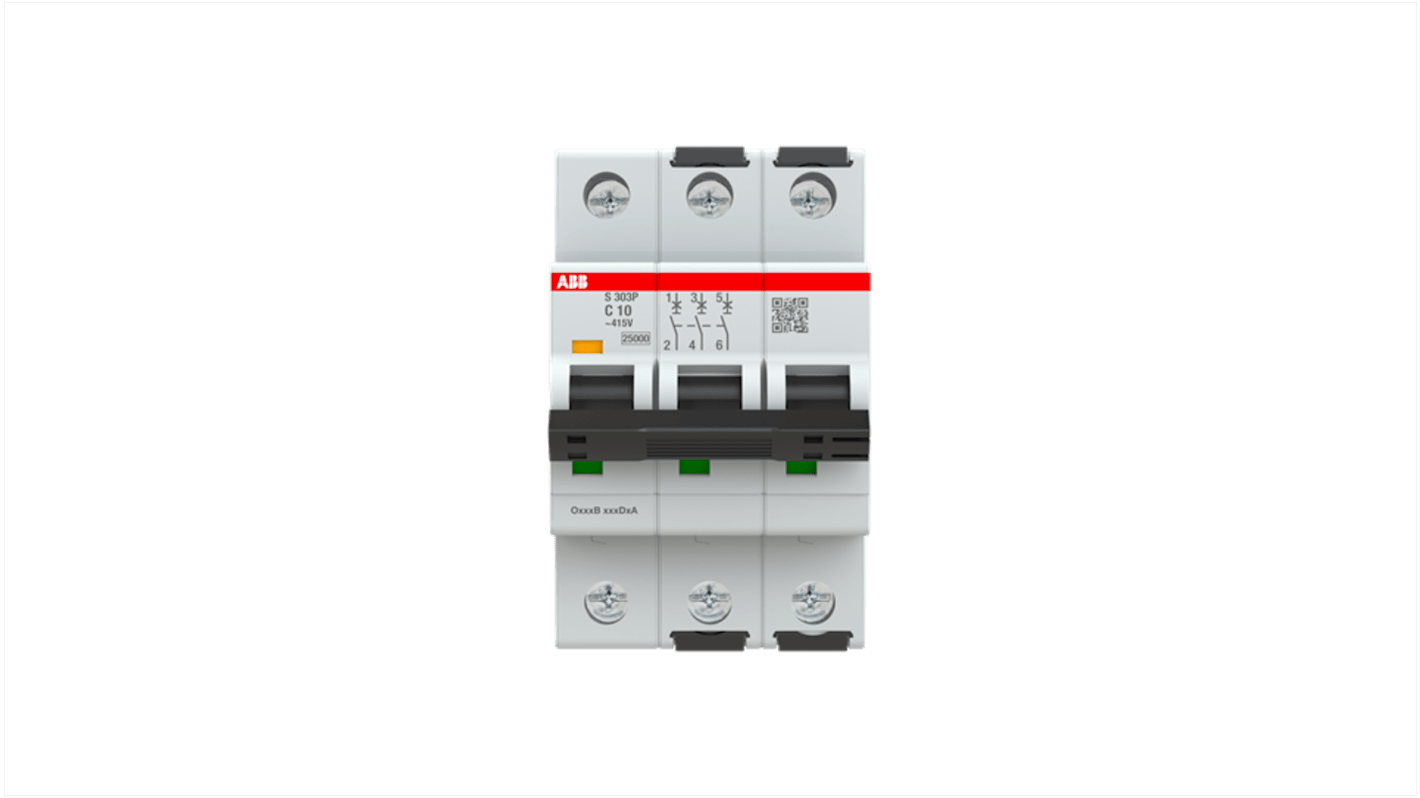ABB S303 MCB, 3P, 10A Curve C, 415V AC, 125V DC, 15 kA Breaking Capacity
- RS Stock No.:
- 200-311
- Mfr. Part No.:
- 2CDS383001R0104
- Brand:
- ABB

Subtotal (1 unit)*
£89.68
(exc. VAT)
£107.62
(inc. VAT)
FREE delivery for orders over £50.00
Temporarily out of stock
- Shipping from 05 November 2025
Need more? Click ‘Check delivery dates’ to find extra stock and lead times.
Units | Per unit |
|---|---|
| 1 + | £89.68 |
*price indicative
- RS Stock No.:
- 200-311
- Mfr. Part No.:
- 2CDS383001R0104
- Brand:
- ABB
Specifications
Technical Reference
Legislation and Compliance
Product Details
Find similar products by selecting one or more attributes.
Select all | Attribute | Value |
|---|---|---|
| Brand | ABB | |
| Number of Poles | 3 | |
| Current Rating | 10A | |
| Tripping Characteristics | Type C | |
| Rated AC Voltage | 415V | |
| Rated DC Voltage | 125V | |
| Breaking Capacity at Maximum Voltage Rating | 15 kA | |
| Series | S303 | |
| Circuit Breaker Type | MCB | |
| Length | 69mm | |
| Width | 52.5mm | |
| Mounting Style | DIN Rail | |
| Depth | 69mm | |
| Model Number | S303P-C10 | |
| Terminal Contact Type | Screw | |
Select all | ||
|---|---|---|
Brand ABB | ||
Number of Poles 3 | ||
Current Rating 10A | ||
Tripping Characteristics Type C | ||
Rated AC Voltage 415V | ||
Rated DC Voltage 125V | ||
Breaking Capacity at Maximum Voltage Rating 15 kA | ||
Series S303 | ||
Circuit Breaker Type MCB | ||
Length 69mm | ||
Width 52.5mm | ||
Mounting Style DIN Rail | ||
Depth 69mm | ||
Model Number S303P-C10 | ||
Terminal Contact Type Screw | ||
- COO (Country of Origin):
- DE
ABB S303 Series MCB, 10A Current Rating, 15kA Breaking Capacity - 2CDS383001R0104
This MCB is a 3-pole circuit breaker from the S303 series designed to provide efficient protection against overloads and short circuits in electrical installations. With a current rating of 10A and a robust tripping characteristic of Type C, this device operates effectively under a rated AC voltage of 415V. Measuring 52.5mm in width and 69mm in depth, it is conveniently mounted on a DIN rail, ensuring a secure and space-efficient installation.
Features & Benefits
• Supports a breaking capacity of 15kA for enhanced safety
• Screw terminal design allows easy installation and wiring
• Compact dimensions facilitate space-saving in control panels
• Type C characteristic enables suitability for high inrush currents
• Built for commercial and industrial applications with reliability
• Manual reset feature provides straightforward trip management
• Screw terminal design allows easy installation and wiring
• Compact dimensions facilitate space-saving in control panels
• Type C characteristic enables suitability for high inrush currents
• Built for commercial and industrial applications with reliability
• Manual reset feature provides straightforward trip management
Applications
• Mounted in industrial control panels for motor protection
• Utilised in commercial electrical installations for load management
• Integrated into automation systems for enhanced safety
• Utilised in backup systems as a critical protective device
• Utilised in commercial electrical installations for load management
• Integrated into automation systems for enhanced safety
• Utilised in backup systems as a critical protective device
How does the tripping characteristic affect operational performance in various applications?
The Type C tripping characteristic is designed to withstand brief surges, making it ideal for applications that involve motors and transformers. This characteristic ensures that the device does not trip during normal operation, while still providing adequate protection against sustained overloads.
What installation considerations should be taken into account when selecting this circuit breaker?
When installing this device, ensure that it is mounted on a DIN rail in a dry environment to maintain optimal performance. Additionally, consider the ambient temperature, as it affects the rated current capacity
operation at extreme temperatures may necessitate derating.
What maintenance is required to ensure long-term reliability of this product?
Regular inspection for loose connections and any signs of wear or damage is advised. Additionally, testing by simulating overload conditions can ensure that the breaker is functioning correctly and can trip as expected during fault conditions.
